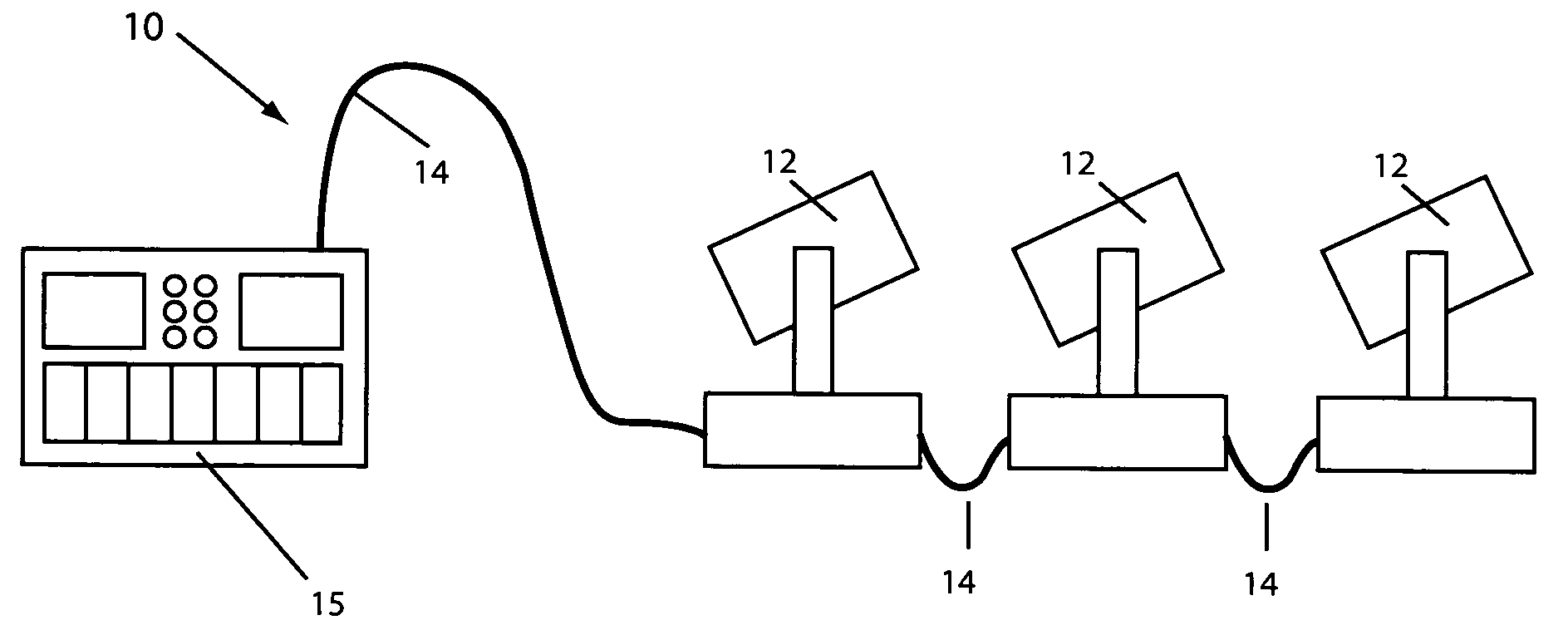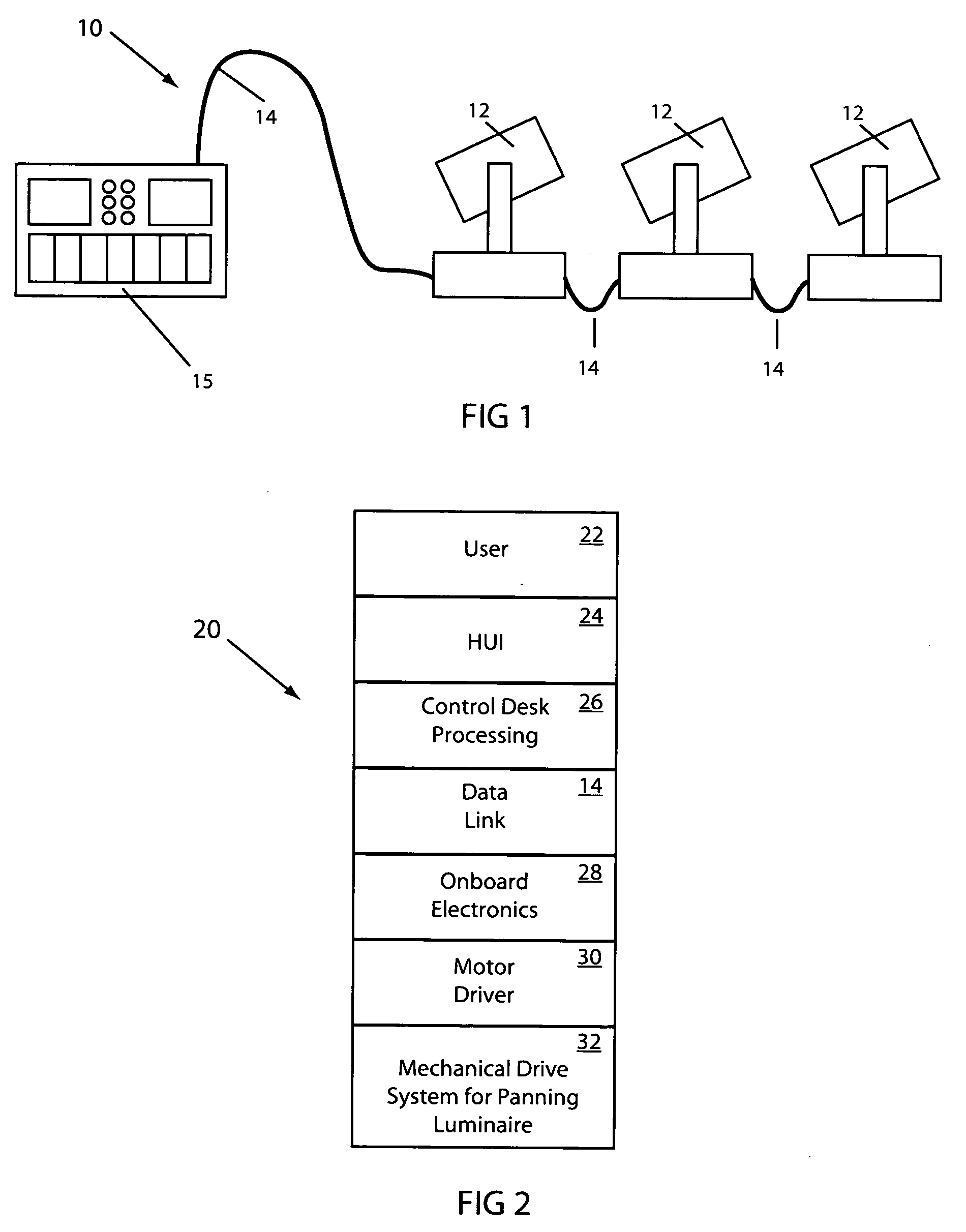System and method for minimizing hysteresis in a motor drive system
a technology of motor drive and hysteresis, which is applied in the direction of vehicle components, lighting and heating apparatus, lighting applications, etc., can solve the problems of mechanical hysteresis or backlash in the mechanical drive system, limiting the accuracy and limiting the accuracy and repeatability of the movement of the automated luminair
- Summary
- Abstract
- Description
- Claims
- Application Information
AI Technical Summary
Problems solved by technology
Method used
Image
Examples
Embodiment Construction
[0029]Preferred embodiments of the present invention are illustrated in the FIGUREs, like numerals being used to refer to like and corresponding parts of the various drawings.
[0030]The present invention generally relates to motor control systems and specifically to the use of multiple motors to move a single output shaft in an automated luminaire. The system disclosed provides smooth movement and reduces backlash in the movement to provide a system with high positional accuracy while mitigating the need for expensive high resolution encoders.
[0031]In one embodiment the present invention utilizes two motors driving a single output shaft through common or separate drive trains. After the control system detects that the system has come to rest the unit relaxes and equalizes the slack and / or tension in the drive train by first rotating the two motors as an antagonistic pair in opposing directions in one rotation direction, then reversing this turn by rotating the two motors as an antago...
PUM
 Login to View More
Login to View More Abstract
Description
Claims
Application Information
 Login to View More
Login to View More - R&D
- Intellectual Property
- Life Sciences
- Materials
- Tech Scout
- Unparalleled Data Quality
- Higher Quality Content
- 60% Fewer Hallucinations
Browse by: Latest US Patents, China's latest patents, Technical Efficacy Thesaurus, Application Domain, Technology Topic, Popular Technical Reports.
© 2025 PatSnap. All rights reserved.Legal|Privacy policy|Modern Slavery Act Transparency Statement|Sitemap|About US| Contact US: help@patsnap.com



